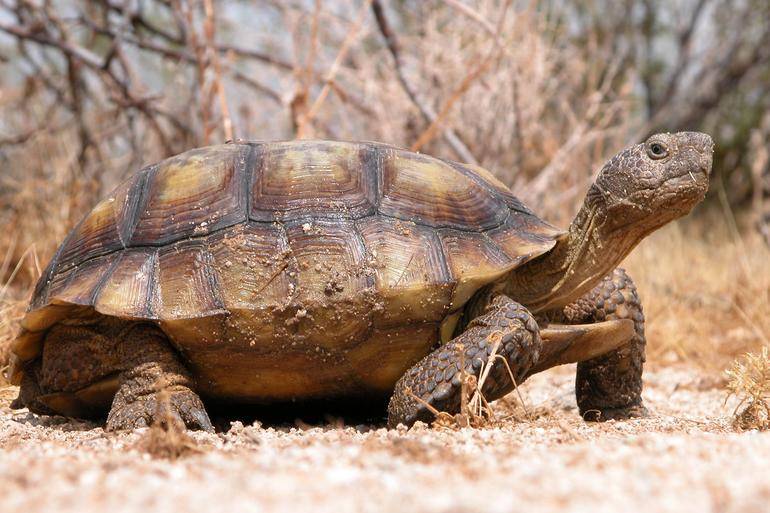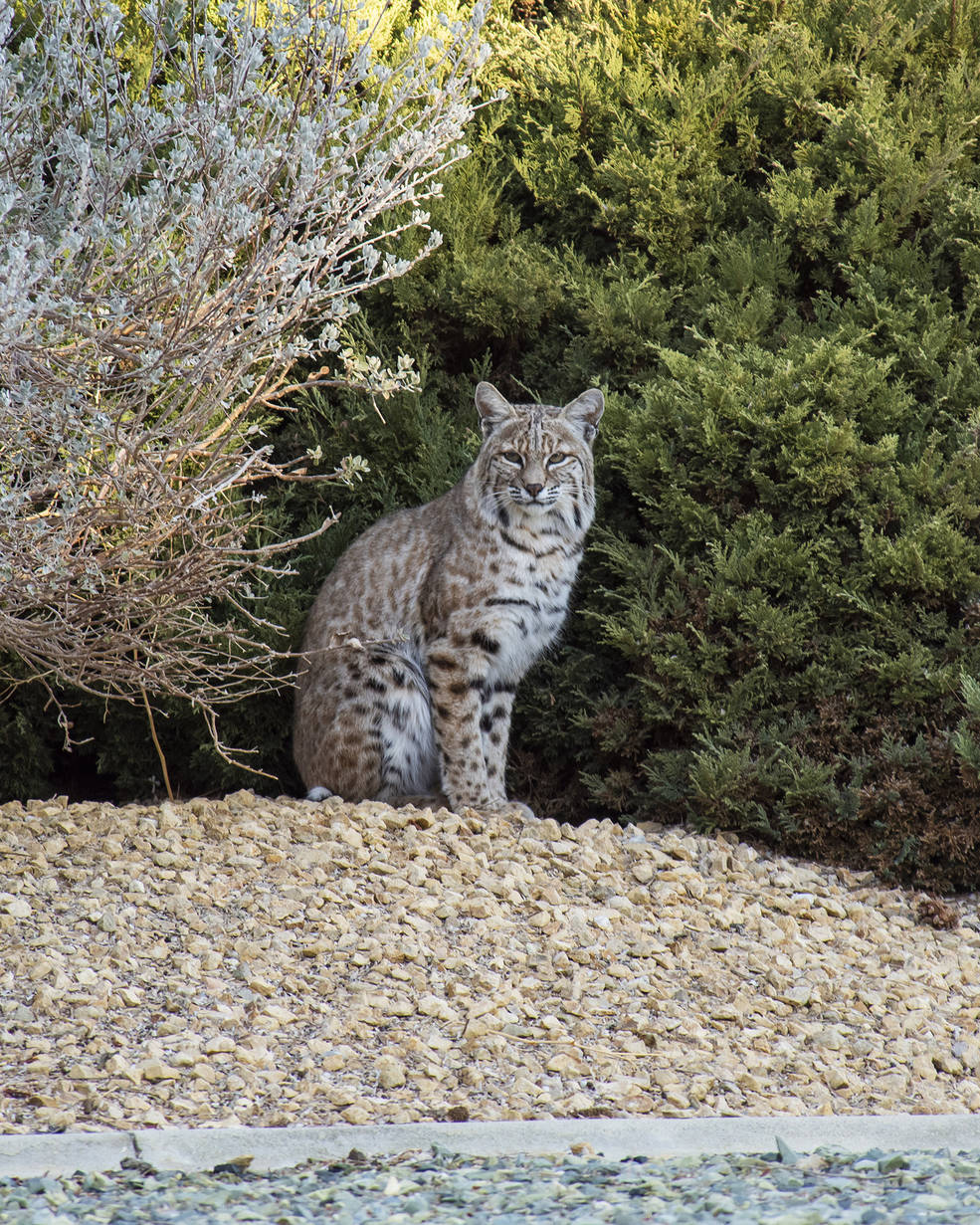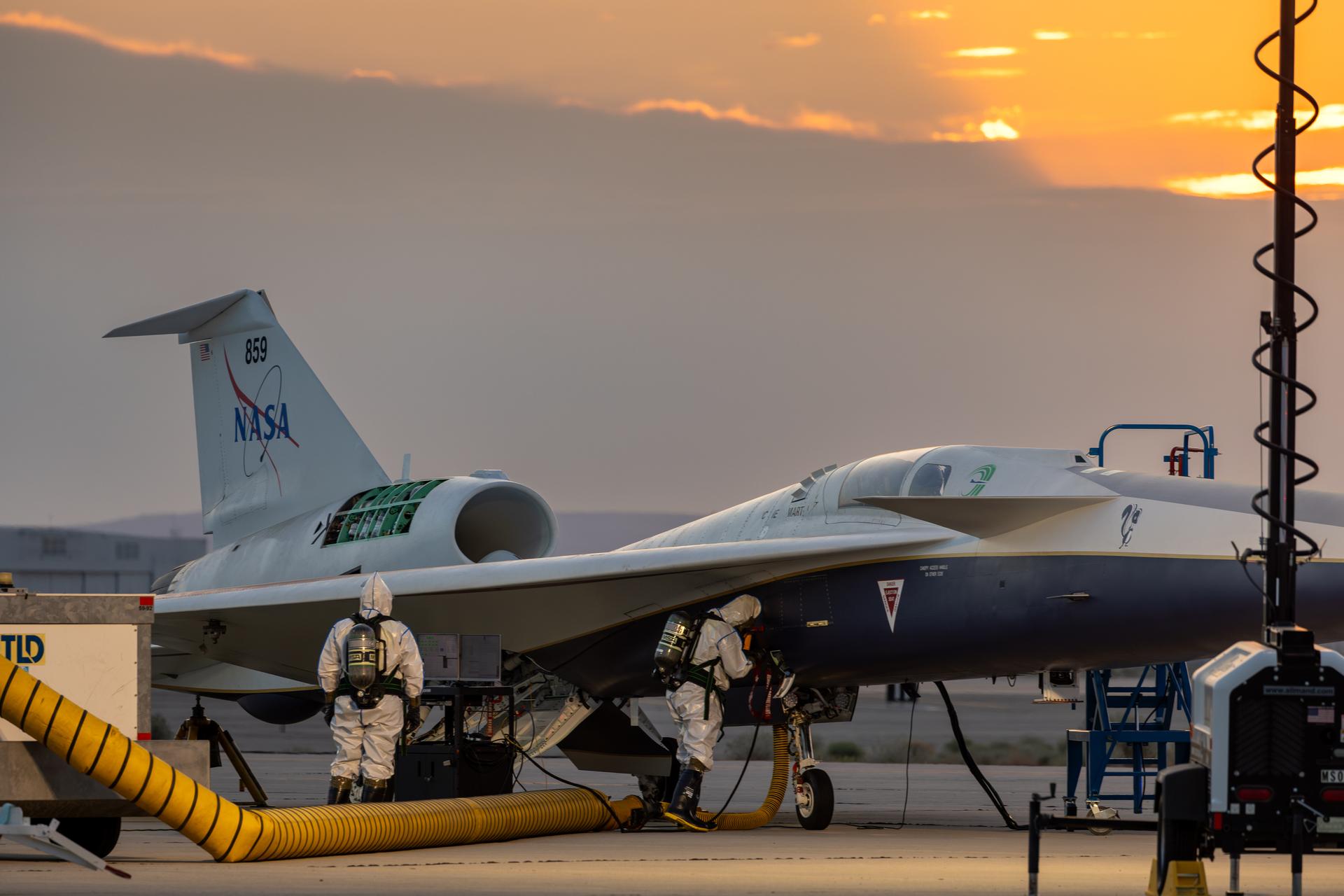Each NASA facility has its own unique micro-climate and geography. At NASA’s Armstrong Flight Research Center in Edwards, Calif., the high-desert climate is an interesting natural habitat for a variety of wildlife.
Armstrong Flight Research Center, housed at Edwards Air Force Base, sits on more than 300,000 acres of desert land. Part of that landscape is Rogers Dry Lake, a drainage basin that retains water with no outflow to external bodies of water like rivers, other lakes, or the ocean. This unique climate makes it an ideal location for the experimental flight testing that NASA Armstrong is known for.
It is also home to desert tortoises, bobcats, lizards, snakes, scorpions, and burrowing owls. To ensure the safety of the wildlife and the personnel, NASA biologists and the environmental office monitor the wildlife and their behavior. Mark Bratton, environmental scientist and wildlife biologist, monitors and tracks the wildlife on center and across the base in conjunction with the Air Force.
The desert tortoise is native to the Mojave Desert. The desert tortoise can live between 50 and 80 years and grow to be 10 – 14 inches. Some tortoises on base have been outfitted with radio transmitters on their shells, and other tortoises that have been relocated to different areas of the base. “The radio transmitters help us know where the adult female tortoises are so when they are ready to lay their eggs, we can take the females to holding pens were they lay/deposit their eggs in predator-proof pens. After the female lays her eggs, the adult female is returned to the wild and the eggs incubate in the pens until they hatch. Once the young hatch they are raised in predator-proof pens until they are larger and more predator resistant,” said Bratton.
Bobcats have been known to venture out at Armstrong. “We know of a male and female bobcat, and three kittens. We’re privileged to have the bobcats and even get to see them, since they’re pretty secretive animals,” said Bratton. Currently the large mammal study has been tracking some of the resident bobcats and coyotes on base. “Bobcats have different resources in different locations. Their water source might be a mile or so away from their den and another location to stalk prey,” said Bratton. NASA employees have had the opportunity to witness bobcats lounging around some of the buildings and with caution, they have been able to take photos from a distance.
Snakes and lizards are also abundant around Armstrong. Bratton notes that many of the snakes are non-venomous although some like the gopher snake try to mimic the venomous snakes like the “Mojave green” rattlesnake by flattening out their head and shaking their tail in dried leaves to mimic a rattle.
The Environmental Office takes great care in managing the animals in residence at Armstrong, monitoring their behavior and locations for the safety of NASA personnel and the animals. In every case, if you see wildlife a little too up close and personal, Bratton suggests avoiding them, give them a wide berth and go on about your business.



































